Latino New Yorkers Must Find Common Ground to Move Toward Progress
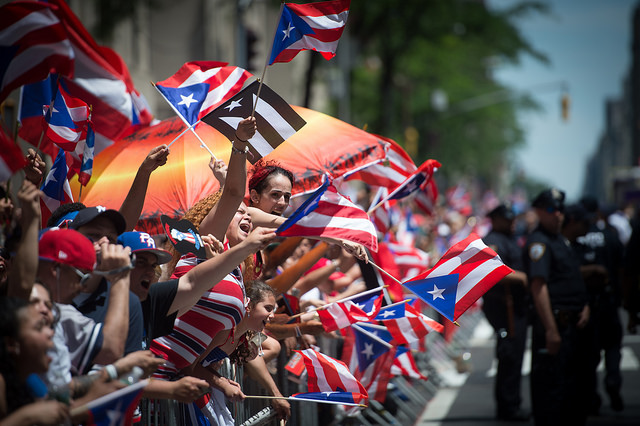
Puerto Rican Day Parade (photo: Michael Appleton/Mayor’s Office)
About 2.5 million New York City residents are Latino, making the community the second largest ethnic group in the city only after non-Latino whites. The majority of the city’s Latino population is U.S. born and nearly 80% say they speak Spanish at home.
But despite strong population growth, Latino New Yorkers face a number of adverse conditions that continue to put constraints on their economic progress. About 26.4% of all Latino families live in poverty. That number jumps to 49.9% among households led by women with children. Immigration status, high unemployment, and displacement are just a few of the pressing contributing factors leaving Latinos behind.
The Latino community must work together to shape its future.
With that in mind, last year three Latino research institutes at CUNY—the CUNY Dominican Studies Institute, Center for Puerto Rican Studies (Hunter College-CUNY) and the Mexican Studies Institute —along with other partners, held the first ever New York City Summit on Latinos (SoL-NYC), to forge advocacy coalitions to develop an action-based agenda of policy priorities that can move the Latino community forward.
As we prepare to hold the second SoL-NYC Summit on Friday, June 1, we released a set of recommendations produced at last year’s conference through the participation of over 40 representatives of Latino or Latino-serving organizations. While it identifies some of the constraints on Latinos in New York City, it also calls for immediate action.
The recommendations include education reforms responsive to the linguistic and cultural needs of our children; increasing civic and political participation of the community; better access to jobs and economic opportunities, as well as strengthening the city’s “sanctuary” status to better protect law-abiding immigrants at risk of deportation.
This year is particularly important given the federal government’s one-sided focus on immigration, the upcoming gubernatorial election, where Latinos could play a crucial role, and the still-painful devastation left in Puerto Rico by Hurricane Maria. The aftermath of Maria in particular is driving a new exodus to the New York area of Puerto Rican families, which could once again bring demographic change.
As academic institutions, we do not engage in direct action or endorse political candidates. However, we recognize the importance such strategies bring to other stakeholders as they see fit.
Latinos are not a homogeneous group. In New York City, Hispanics represent over 20 different countries of origin and national ethnicities, which can pose a challenge to finding a common agenda.
As conveners, our role is to produce data and non-partisan policy analysis as well as an important space for key stakeholders to find common ground, build alliances, and strengthen their organizing power.
Latinos are strong in numbers; we are the youngest New Yorkers, with a median age of 31 and 36% under the age of 18. We now need to come together to wake up our own sleeping giant and create change.
It is encouraging to see Latinas obtaining college degrees at a faster pace now and also represented among new candidates for office and those recently elected.
However, there are deep, ongoing challenges -- the unemployment rate is still very high, for example, at 11%, compared to the overall unemployment rate of 3.9% in New York City (as of December 2017). Who is making sure that every job creation effort at the city and state levels includes Latinos? Without good-paying jobs there is no upward mobility for a group that’s the poorest and whose diversity brings language barriers as well as different educational levels and immigration statuses. Those are the kinds of discussion our annual conference wants to foster.
While the Puerto Rican and Dominican populations have been growing and spreading around the country, New York City remains the place with the most Puerto Ricans and Dominicans anywhere in the United States. New York City is also the seat of Puerto Rican and Dominican political power at the local, state, and federal levels, given both representation and influence. The Mexican population in the city continues to grow as well, leading also to political empowerment at the city level. Overall, Latinos have become nearly one-quarter of the New York City electorate, mirroring the importance of the Latino vote on the national level.
We are calling on neighborhood leaders, organizations, and other stakeholders in the Latino community to use the conference as a powerful tool to help bring the much-needed resources Latinos need.
Latinos are in good position to drive legislative change. Let’s take advantage of that power to make New York City a more livable home for Latinos and everybody else!
***
Carlos Vargas-Ramos, Director of Policy, External and Media Relations, Center for Puerto Rican Studies, Hunter College (CUNY).
***
Have an op-ed idea or submission for Gotham Gazette? Email This email address is being protected from spambots. You need JavaScript enabled to view it.
The Battle for Urban Economic Sovereignty is Set to Begin
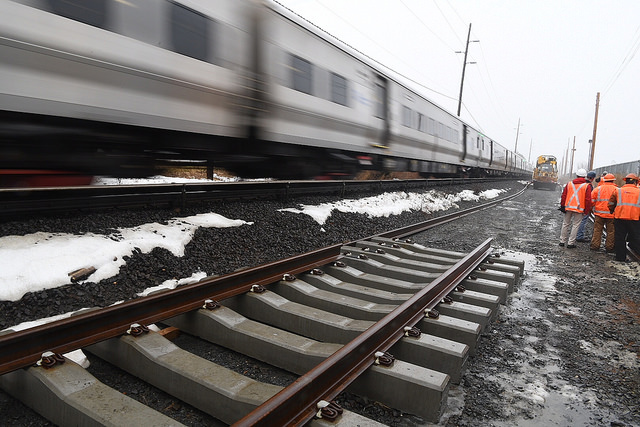
(photo via the Governor's office)
One of the most powerful financial tools in the United States federal government’s financial toolbox is its relationship to the Federal Reserve Bank, which can create money “out of thin air” and then use it to buy the federal government’s debt: treasury bills, bonds, and notes. While the primary purpose of these “open market operations” is to manage U.S. money supply, a convenient side effect is that that the Federal Reserve can, in the words of the Economist magazine, “buy up trillions of government debt, pushing down the cost of borrowing even as governments run up historic peacetime deficits.“
This monetary flexibility allows the federal government to spend more than it earns, and go into massive debt (over $20 trillion!), and still retain the confidence of investors, governments, and its citizens. Per capita, the federal government has over $60,000 of debt per citizen, the second highest debt per capita in the world, for anyone interested in keeping score.
U.S. state and local governments still carry tremendous debt, but since they don’t have their own central banks to bail them out, they have to maintain some semblance of a balanced budget. In practical terms, this means states and city governments can go into debt to pay for capital expenses like bridges and infrastructure, but not operational expenses like social and basic service provision.
In the words of the National Conference of State Legislatures: “unlike the federal government, states are not able to issue debt routinely. Issues of general obligation debt require at least the approval of the legislature and in many states, voter approval. The issue of revenue bonds requires legislation to create an agency to issue bonds and the creation of a revenue stream to repay the debt.”
Blockchain technology can change this dynamic.
First, by enabling sub-national governments to issues bonds faster, better, cheaper, and more regularly than ever before, and then by allowing these entities to create their own local currencies and “central banks” to manage them.
Ultimately, this technology will enables cities, states, and networks thereof to develop similar capabilities as national central banks, launching a whole new era of municipal finance and create new sources of local wealth.
You might have heard of Bitcoin -- a speculative “cryptocurrency” that emerged mysteriously as a quirky open source software project in 2009. At the time of its launch, the value of a bitcoin was, basically, one cent. Now its value hovers around $10,000.
That massive increase in value has prompted lots of coverage of Bitcoin as a phenomenon -- but only recently has media attention shifted to the unique type of database that was first introduced to the world via bitcoin -- and that database technology is called blockchain.
Lots of people explain blockchain well, so here, just the bottomline: blockchain database technologies are extremely good at producing “digital cash,” executing financial transactions and digitizing complex multiparty financial contracts like stocks and bonds.
Five years ago, blockchain technology was only familiar to cypher punks, open source aficionados, libertarians and fin-tech geeks. Today, the technology is being used by big banks to speed up their SWIFT international fund transfer systems, by countries to create new national digital currency systems, and by entrepreneurs and online communities to create their own currency systems outside the purview of the nation-state.
The first hints at how subnational governments within the U.S. could leverage this technology are coming into focus.
Berkeley, California, in partnership with municipal crowdfunding platform Neighborly and the Berkeley Blockchain Lab, is exploring how to issue municipal bonds on the blockchain, and then to pay interest on those bonds with tokens that can be used at local businesses.
There are many potential benefits to this approach. Cities can save money on the costs of issuing bonds, they can offer smaller bonds that were, in the past, prohibitively expensive to issue, and they can use the blockchain’s native ability to document transaction histories to create radically transparent bond offerings -- allowing bond holders to see a precise log of how the bond they purchased resulted in a piece of city infrastructure. By offering interest payments in tokens, the city can establish a technically sophisticated local currency system that can keep incentivizing people to spend their money locally, creating a local multiplier effect.
Unlike past “local money” systems such as Berkeley Bucks, Ithaca Hours, or the much more modern Local Exchange Trading Systems (LETS) emerging in towns around the United Kingdom, blockchain-based token systems can actually function within the framework for modern finance. Token prices can float in international markets, they can be sent anywhere in the world, saved, loaned, invested, used in contracts, and more. They truly are an alternative currency, and as such, municipal token systems could be managed by a new type of municipal central bank that, like the Federal Reserve, could create tokens “out of thin air” and use them to buy municipal debt -- and back the entire system with municipal assets like real estate, tax rebates, tolls, and more.
The political implications of increased municipal financial autonomy powered by blockchain-based technology could be extremely significant, particularly in the United States, where tremendous anxiety is generated by federally-funded, locally-implemented programs like public housing, abortion clinics, and immigration enforcement policies.
If municipalities had the type of monetary powers that are currently exclusively controlled by the federal government, then it’s very possible more resources will be available for programs popular at local levels but not national ones.
Berkeley City Council Member Ben Bartlett explains in Forbes:
“We decide to explore new forms of finance in response to the cuts from DC and corporate tax cuts that took away our ability to fund affordable housing. There are more than one-thousand homeless people living in Berkeley, which is projected to increase by a factor of five in the coming years. Many cities, just like Berkeley, are under a funding assault – we have to think outside of the box in order to solve this problem.“
As the Trump Administration advances federal programs and policies that push cities away, he is also pushing them towards new financial models and technologies that have the potential to transform the relationship between cities, states and nations.
Buckle up -- it’s likely to be a bumpy ride.
***
Devin Balkind is a technologist and nonprofit executive who works on civic technology projects in New York City through Sarapis Foundation and on humanitarian projects around the world through Sahana Software Foundation. He was a candidate for New York City Public Advocate in 2017. On Twitter @DevinBalkind.
***
Have an op-ed idea or submission for Gotham Gazette? Email This email address is being protected from spambots. You need JavaScript enabled to view it.
New York Trails Neighbors in Helping Dreamers Achieve an Education
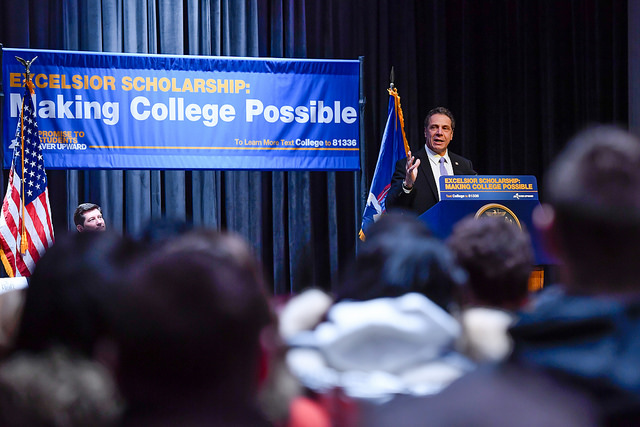
(Photo via the Governor's office)
Governor Andrew Cuomo has talked a big game about supporting immigrants in New York. Yet well over a year after Donald Trump’s inauguration - and more than seven years into Cuomo’s administration - the governor has little actual legislation to show for all of his boasting.
One key bill, the New York Dream Act, which would open up state financial aid to undocumented immigrant youth, known as Dreamers, has passed the state Assembly five years in a row. But, without the governor’s political muscle behind it, the Dream Act has languished each session, stagnant in the Senate.
Meanwhile, though the governor likes to say New York is a progressive leader, its neighbors are bolting ahead of us in offering equal access to higher education. Last week, New Jersey Governor Phil Murphy signed his state’s version of the Dream Act into law. Connecticut passed a similar bill in April.
Dreamers across New York are looking at the inspiring victories of their peers across state lines and wondering: when will it be our turn?
The New York Dream Act is a commonsense bill that would help ease the cost of higher education for undocumented students by expanding access to state financial aid and letting immigrant families participate in college saving programs.
For most undocumented students in New York, the only way to afford higher education is by working while in school or taking on significant debt. As a result, only five to ten percent of the roughly 4,500 undocumented students who graduate from New York high schools every year can attend college.
Take the story of Ricardo Aca, an immigrant New Yorker whose family came from Mexico whne he was 14 years old to give him the opportunity to pursue a better life, including a college education.
When Ricardo finished high school, he found out that, because he was undocumented, he could not access the state financial aid he needed to afford a quality higher education. He began taking photography classes at LaGuardia Community College, realizing that he could earn money shooting events. To pay for his education, he also worked in restaurants and hotels for years. Even so, he could barely afford tuition and ultimately had to stop attending classes.
He only re-enrolled years later, this time at Baruch College, when Make the Road New York, a community organization based in Queens, helped him get a scholarship that covered most of his tuition. Next year, he’ll graduate at age 28, meaning it will have taken him 10 years to obtain a bachelor’s degree.
While Ricardo’s story has a happy ending despite the lost time, there are many other immigrant youth in New York that don’t have the blessing of a scholarship.
As the Trump administration pursues an ever-clearer anti-immigration agenda, states have a greater responsibility to step in and do what they can to protect immigrant communities.
Ten states have now passed legislation to offer undocumented students tuition support, including California, Minnesota, and Texas. Every day, New York’s failure stands out more and more. It’s particularly shameful given our state has the second-highest share of immigrants in the country -- higher than both New Jersey and Connecticut. And the Dream Act would be a clear boon to our state -- the bill would only cost New York around $25 million per year, a tiny fraction of its $168 billion budget, and more than make up for its cost through increased tax revenue and economic contributions to the state.
Immigrant youth across the state have for years called on Governor Cuomo to use his considerable power to pass the bill. But, while Cuomo has publicly supported it, he has never made it a top priority. Just this year, when Ricardo and other Dreamers went to his office in Albany to deliver petitions for the Dream Act, his staff locked the door and refused to let them in.
Thousands of undocumented students in New York every year lose the opportunity to improve their lives and the lives of their families because New York fails to provide the basic support to continue their education.
Governor Cuomo, the time for words has passed. Dreamers like Ricardo across New York are counting on you to make the New York Dream Act a reality. Let’s finally unlock the doors of opportunity for all in our state.
***
Ana Maria Archila is Co-Executive Director of the Center for Popular Democracy.
***
Have an op-ed idea or submission for Gotham Gazette? Email This email address is being protected from spambots. You need JavaScript enabled to view it.
Legalize To Our Demise
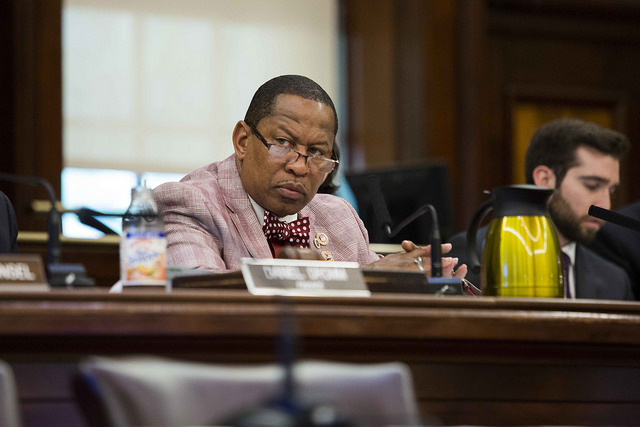
Council Member King, one of the authors (photo: Emil Cohen/City Council)
As we talk about legalizing marijuana, or cannabis, in New York, let’s look back on our nation’s history and see the good of endorsing harmful substances. We recognize that alcohol is legal, but let's face it -- it isn't good for you. Alcohol impairs judgement and making it easily available for adults means it is easily available for young people. For decades, our nation has seen alcoholism ruin marriages, families, and lives. We've seen countless alcohol-related vehicular deaths and alcohol-related activities destroy healthy academic careers and undo people's’ ability to go to work everyday.
Are we ready to have the conversation about the costs of legalizing another harmful substance?
Marijuana shouldn't be consumed by any young person, but our conversation recently on legalization has involved young black and brown men being policed unfairly, and all we seem hear is: let's legalize marijuana to end this unfair policing.
Can't we separate these issues? Of course we can, because they are indeed two separate issues. Poor policing has nothing to do with using drugs. If we want to deal with different policing strategies in communities of color and white communities, then that should be the conversation. Legalizing marijuana does not address those policing strategies. What it does is send a poor message to kids that smoking weed is OK.
***
Fernando Cabrera, Chaim Deutsch, Andy King & Ruben Diaz Sr. are members of the New York City Council representing portions of the Bronx and Brooklyn. On Twitter: @FCabreraNY & @ChaimDeutsch & @AndyKingNYC & @revrubendiaz
***
Have an op-ed idea or submission for Gotham Gazette? Email This email address is being protected from spambots. You need JavaScript enabled to view it.
For 34,000 Children and Their Parents, A Summer of Uncertainty and More At Stake
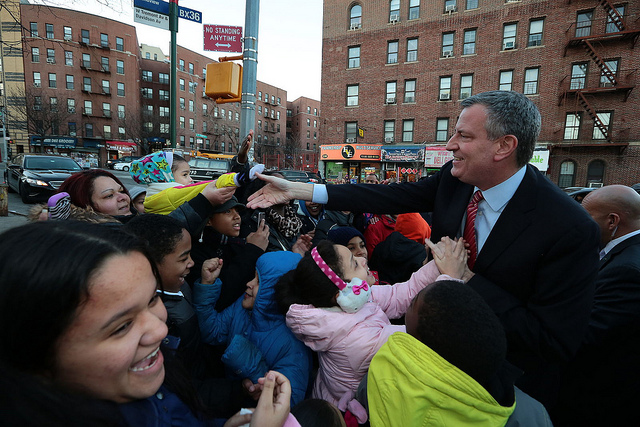
(photo via the Mayor's Office)
In the Fall of 2014, New York City took an important step forward with the rollout of universal after-school for all public middle school students. SONYC, or School’s Out NYC, provides 6th, 7th and 8th graders with a foundation for success by offering opportunities, beyond the traditional learning settings of a classroom, that allow them to explore their interests and abilities in sports and arts and youth leadership and more.
Mayor de Blasio said in his announcement at the time that “Middle school is often a make-or-break time in an adolescent's life—and we're determined to use all tools at our disposal to expand learning opportunities for the future shapers of our city."
In the first year of implementation, the SONYC after-school program offered a summer component, mirroring all after-school programs established during the Bloomberg administration. This was a positive step as research has proven summer camp programming is a critical component of child well-being and academic success. Among the tremendous benefits of summer programs, they help to close the achievement gap and aid with preventing “summer slide” learning losses. According to the National Summer Learning Association, summer learning loss accounts for two-thirds of the ninth-grade achievements gap in reading, and low-income youth lose two to three months of achievement each year.
However, since the summer of 2015, the de Blasio administration has annually threatened to cut more than $20 million for summer camp programming from the students enrolled in the after-school programs of the mayor’s creation. This money, or a portion of it, usually gets restored after negotiations with the City Council; however, this back-and-forth “budget dance” process leaves parents and programs scrambling at the last minute and anxiety-ridden until budget adoption. And as the budget is adopted in late June, these restorations naturally result in a smaller and smaller number of program slots, as ramping up a program, hiring staff, engaging parents, and enrolling students all takes time. The beginning of the summer is not the time to make these crucial funding decisions.
Once again, the de Blasio administration is planning to cut summer programs for over 34,000 middle-school students. Those most at risk of losing programming are the low-income working parents and families who are already facing many stressors in trying to make ends meet. Keeping their children safe during the summer months should not be one of them.
The proposed cut impacts children and families in every corner of the city but is particularly drastic in communities with the greatest needs. The community district of Brownsville is facing the biggest cut of nearly 1,600 slots despite having the highest child poverty rate in the city. Other hard-hit communities include East Harlem (1,281 slots), East New York (1,219 slots), the Rockaways (1,137 slots), East Tremont (1,097), Central Harlem (1,087 slots), and the Lower East Side (1,030 slots). Each slot represents a child who will not have an enriching and stable location to learn and grow this summer.
The budget dance for summer camp must come to an end! We must return to the original model that recognized that the families whose children engaged in after-school programming during the school year need summer camp opportunities that allow children to explore cultural and recreational interests and abilities and offer academic components that prevent summer learning loss.
We agree with Mayor de Blasio when he says New York City must become the fairest big city in America. Threatening to cut summer camp from 34,000 children, with a profound negative impact on the poorest communities of this city, is not fair! Playing the budget dance with funding for summer camp programs is not fair! Fairness demands that the de Blasio administration restore and baseline this funding - 34,000 children and their families are counting on it!
***
Jennifer March is executive director of Citizens’ Committee for Children of New York and a leader of the Campaign for Children. On Twitter @CCCNewYork.
***
Have an op-ed idea or submission for Gotham Gazette? Email This email address is being protected from spambots. You need JavaScript enabled to view it.
To Make New York City More Affordable, End the Cap on Density
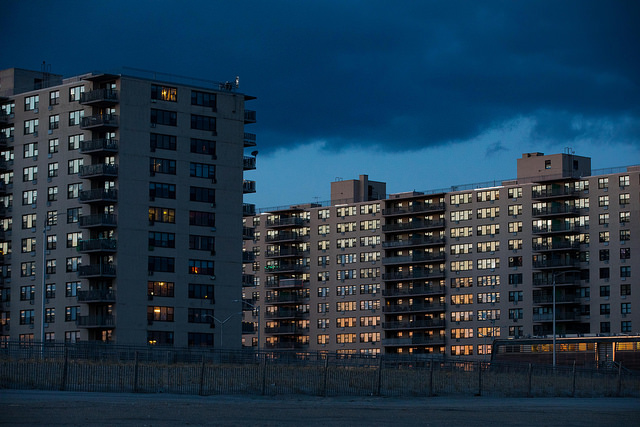
(Benjamin Kanter/Mayoral Photo Office)
New York’s severe housing crisis can be traced to a simple fact—our city doesn’t have enough homes for the people who want to live here. The shortage has led to ever-increasing rents, the steady displacement of long-standing communities, and levels of homelessness not seen since the Great Depression. To put it bluntly, we need to build more homes. Lots of them. Affordable and market rate. Yesterday.
One senseless obstacle to new housing is a statewide cap on the density of new residential construction. Since 1961, New York has prohibited the construction of any residential building that has floor space greater than 12 times the size of its lot. This limit is ill-suited for New York City, which needs to allow larger residential buildings to house its growing population in neighborhoods with good transit and good schools. The Regional Plan Association, a respected and nonpartisan think tank, has called for the repeal of this cap, arguing that without more dense construction, displacement in gentrifying neighborhoods will accelerate and the City will choke on worsened congestion.
It is encouraging that Mayor de Blasio and the state Senate have signaled support for ending these restrictions. Unfortunately, Andrew Berman, Executive Director of The Greenwich Village Society for Historic Preservation (GVSHP), recently published an op-ed with Gotham Gazette that includes several misleading arguments in favor of the density cap. Berman argues that fighting against new housing will somehow result in a more affordable city. He is mistaken; while new highrises will not single-handedly fix New York’s affordability problem, they deserve to be recognized as a serious tool for addressing the housing crisis.
In a shortage, the rich, whether they be landlords, wealthy tenants, or homeowners, always win. In a housing glut, tenants win. Denser buildings would produce more housing units, a substantial portion of which would be permanently affordable through the Mandatory Inclusionary Housing law. Before leaving office in 2016, the Obama Administration published an analysis of the barriers to new construction of affordable housing, and the most destructive factor they identified were burdensome restrictions on the size and shape of new buildings, like those Mr. Berman endorses.
Many readers may be skeptical of the idea that new market-rate homes help keep rents low, but studies have shown that denser, market-rate apartments in in-demand neighborhoods relieve pressure on existing homes citywide. Recent construction has lowered median rents across Brooklyn, Manhattan, and Queens, not just the top of the market. And south of 96 Street, the most affordable neighborhoods also happen to be the densest—the Upper East Side and the Lower East Side—and not, tellingly, neighborhoods hemmed in by ‘historic’ zoning, like Mr. Berman’s Greenwich Village.
If we don't produce enough new market-rate units, the people who might move into a new condo building in Downtown Brooklyn might instead buy a converted brownstone In Crown Heights, displacing existing Crown Heights residents in the process. People who might want to live on the Upper West Side are priced out and move into West Harlem instead. Forbidding dense development in one neighborhood is a recipe for gentrification in the next one over. Members of my organization, Open New York, have experienced this first-hand. Some of us, priced out of neighborhoods like Kips Bay, have become reluctant gentrifiers of Bushwick or Bed-Stuy. Others, like myself in the East Village, worry about our rents rising and facing the same fate.
Although unscrupulous landlords or rapacious speculators hardly help matters, the unfortunate truth is that the city’s housing crisis and the displacement it has wrought are primarily caused by these kinds of restrictions. Wealthy and politically-connected residents in desirable neighborhoods consistently use these laws to thwart the construction of new housing under the guise of ‘preserving neighborhood character,’ keeping their communities exclusive and pushing both new residents and their communities’ most vulnerable residents into less well-off areas. The result is gentrification and skyrocketing rents. New York needs to consider another way.
Lifting the state density cap would not affect residents’ right to have a say in new development. Any changes to a neighborhood’s zoning would still have to go through the regular land-use process and be approved by the City Council, and the city’s Mandatory Inclusionary Housing law would still apply, ensuring any changes include a mix of affordable and market rate units. But eliminating the ban would give residents more flexibility to decide how to grow, whereas keeping it forces us to double down on the same failed policies of exclusion. Rather than looking to Greenwich Village—one of the most expensive neighborhoods in the city—as a model to emulate, we should be working to eliminate the barriers to affordable growth. Removing this counterproductive restriction on density is a good first step.
***
William Thomas is an East Village resident and a member of Open New York, an independent pro-housing advocacy group. On Twitter, @OpenNYForAll.
***
Have an op-ed idea or submission for Gotham Gazette? Email This email address is being protected from spambots. You need JavaScript enabled to view it.
Change the Political Status Quo: Run for County Committee
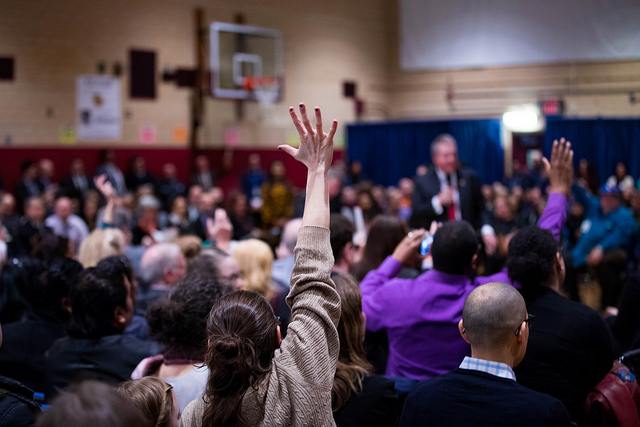
(photo: NYC Mayor's Office)
Today, throughout Kings County, aka Brooklyn, there are many low-income tenants, working class people, and people of color in desperate need of and clamoring for true progressive political representation in their Democratic Party and from their state representatives. Leaders throughout a number of communities are critically looking at our elected officials -- especially state-level politicians running in primary elections this year -- and asking if those officials truly represent their views.
Locally-focused, civic-minded Brooklynites are questioning whether these politicians show up to important meetings or rallies that involve our public schools, our rent-stabilized housing units, our transportation system, and more -- and whether they deliver on those key issues when representing our neighborhoods.
I often scratch my head and wonder why newly-founded groups like New York Senate District 17 for Progress and Rise & Resist,as well as some longer-standing groups like New Kings Democratsexist. And I often arrive at the same clear conclusion: they exist because they’re tired of having centrist politicians representing them and their communities; they want their more left-leaning views represented in government. They want to hold their representatives accountable to the stances that they care about, and they’re fed up with the closed processes of our county system.
Every county in the United States has committees of Democrats and Republicans that help to determine the agenda and endorsements of their local parties. In Brooklyn, there are 21 Assembly Districts that altogether make up the Kings County Democratic Committee. Each Assembly District has many election districts (each of which consists of a roughly three-to-four square-block radius) and Democrats can choose to gather an estimated 40 petition signatures every two years to join the county committee and help mold the platform of their party.
Today, the leaders of our Kings County Democratic Committee could play a huge part in giving the voiceless a voice by expanding the party and ensuring that Democrats from each election district have a say in how they want to be represented through party leadership and what policies the Democratic Party fights for. Unfortunately, this is far from the reality.
Why is it that in the 21st century in the fourth-largest county in the country -- Brooklyn -- there are still about 500 Democratic County Committee seats open? Is it not the function of our local Democratic Party to build our party and ensure inclusion of many voices as we determine the direction we want our party to take when endorsing candidates or crafting policy platforms? There is a key solution for solving this problem: we must organize to reform our party and hold elected officials accountable to our progressive priorities.
Next month, in June, I along with more than a dozen other long-standing Bushwick residents and activists will be petitioning to get on the Kings County Democratic Committee in our Assembly District (AD54). Others should do the same where they live. This includes knocking on doors and collecting roughly 40 signatures of registered Democrats in a four-to-five block radius of your home, depending on the exact map of your election district.
Door-knocking allows for honest conversation with our neighbors about why we’re doing this. We’re tired of having a Democratic Party that is not doing the utmost to push the envelope on things that matter to us. In Bushwick that means fighting the everyday displacement taking place and strengthening schools that have been ranked in the bottom third since state testing has been used as a performance measure.
I am proud to state that these new groups of individuals running for County Committee in AD54 are community board members, organizers, educators, community gardeners, and low- to middle-class tenants. This is important at a time when many progressive organizations in Brooklyn are being dismissed because of how heavily white their memberships appear to be. As a group, we are tired of business-as-usual politics. We are tired of not seeing our Assembly member and state senator at important local meetings. We are tired of progressivism not being the mantle on our table.
As a result, we’ll aim to get some of our very own neighbors to also join County Committee during our door-knocking adventures so we can further build voting blocs that hold our elected officials accountable. It is time for us to be the change we wish see in our local Democratic Party. It is time for us Brooklynites to join en masse and bust open the closed doors of the Kings County Democratic Party.
***
Boris Santos is a community organizer for the office of City Council Member Antonio Reynoso and a former public school teacher. The opinions expressed here are his alone.
***
Have an op-ed idea or submission for Gotham Gazette? Email This email address is being protected from spambots. You need JavaScript enabled to view it.
Expanding Health Insurance Enrollment Will Help Heal New Yorkers and Our Public Hospitals
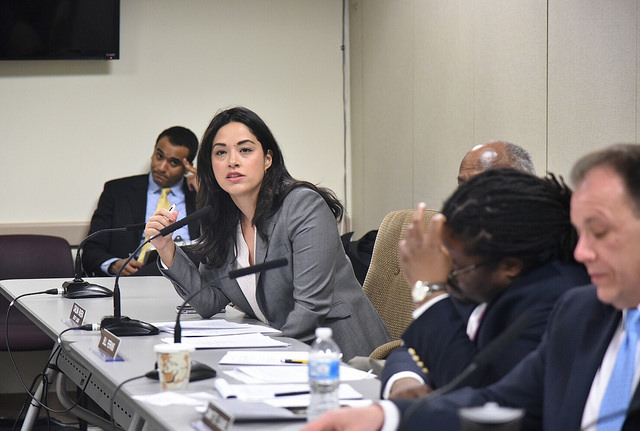
Council Member Rivera, one of the authors (photo: John McCarten/City Council)
Even in an era of relentless attack on health care by the Trump administration and its allies in Congress, New York City is continuing to reap enormous benefits from the Affordable Care Act. This year alone another 80,000 city residents enrolled in health coverage through our state’s Obamacare exchange.
But a huge number are still being left behind: an estimated 962,000 adults in the five boroughs remain uninsured. These New Yorkers -- many of whom are living in poverty -- often receive no health care until their conditions are severe enough to land them in the emergency room.
The trend is not good for those New Yorkers’ health, as they should have access to preventive care, regular check-ups, and other aspects of quality health care. What’s more, the current situation is also dealing a serious financial blow to our struggling public hospital system (known as Health + Hospitals), whose vital mission it is to serve those in need, including the uninsured. For H+H to avoid financial disaster we need to close the health insurance gap in New York City.
H+H serves over a million patients per year in a network of 11 acute care hospitals and dozens of other facilities throughout the five boroughs. These institutions are by far our city’s largest provider of care to Medicaid recipients, mental health patients, and -- critically -- those who are uninsured.
For decades our public hospitals -- Bellevue, Kings County, Harlem, Elmhurst and others -- have been the ultimate safety net for New Yorkers with nowhere else to turn. H+H’s diverse and committed staff, its proximity to low-income communities, and its sliding-scale fees have helped establish it as second-to-none in serving the neediest New Yorkers.
But balancing the books at our public hospitals has never been easy, in part because Medicaid reimbursement rates are so low. The system’s challenges have only gotten worse in recent years as federal and state safety-net funding has shrunk. And now tectonic changes in the health sector have dealt further blows, as care rapidly moves from inpatient to outpatient services.
The result: H+H is confronting a $1.3 billion deficit this year, projected to balloon to $2.1 billion next year.
This financial strain has real implications for patients, compounding long-running problems in the system. The wait time for appointments at H+H can stretch into the months. Many of the system’s buildings are crumbling, with leaking roofs at Harlem Hospital, deteriorated plumbing at Lincoln, obsolete electric systems at Metropolitan, and elevators throughout the system that are so outdated that their replacement parts are no longer sold.
H+H’s new CEO, Dr. Mitchel Katz, has laid out a multi-pronged plan to address this crisis. He has set out to reduce administrative expenses, more effectively bill insurance companies, and retain more paying patients, among other efforts.
But there is another critical strategy needed to save H+H: New York City urgently needs to enroll more people in health insurance.
Our public hospitals treat over 400,000 uninsured patients each year. That represents hundreds of millions of dollars of lost insurance billing for those eligible for coverage. Providing this health care regardless of ability to pay is the moral thing to do. It also affects the health of all New Yorkers by helping us prevent the spread of communicable diseases.
We need to tap health insurance as a way to make this important work financially sustainable. That’s why it’s critical that we dramatically ramp up our outreach and enrollment efforts.
Today, most funding for ACA enrollment is provided by the State, which spends about $12 million per year on a network of community-based organizations in the five boroughs offering health insurance navigation assistance.
Several City agencies also have dedicated teams doing enrollment, but the numbers are small: only about 50 staff at Human Resources Administration (HRA) and 70 at Department of Health and Mental Hygiene (DOHMH).
We need an aggressive, coordinated plan to take this work to the next level. And we need to be on the ground in neighborhoods. Community-based non-profits make ideal partners for this work, because of their cultural competence and because of the trust they so often have earned in low-income communities.
One group of New Yorkers can’t get enrolled no matter how much we spend on outreach: undocumented immigrants. But there’s a win-win possibility for them as well. By investing in a program to provide them access to primary care we can improve health outcomes and prevent the more costly H+H emergency room admissions that would otherwise occur.
A twin effort to enroll more New Yorkers who are eligible for insurance and to fund access to primary care for those who are undocumented would improve the health of our people while going a long way to shore up the finances of our public hospital system.
That would be a giant step forward to the goal of ensuring that each and every New Yorker, regardless of income or immigration status, has access to the affordable, high-quality care they need.
***
Mark Levine and Carlina Rivera are members of the New York City Council. Levine chairs the Council’s health committee, Rivera chairs its hospitals committee. On Twitter @MarkLevineNYC and @CarlinaRivera.
***
Have an op-ed idea or submission for Gotham Gazette? Email This email address is being protected from spambots. You need JavaScript enabled to view it.
End the Parking Giveaways, Increase Revenue and Reduce Congestion
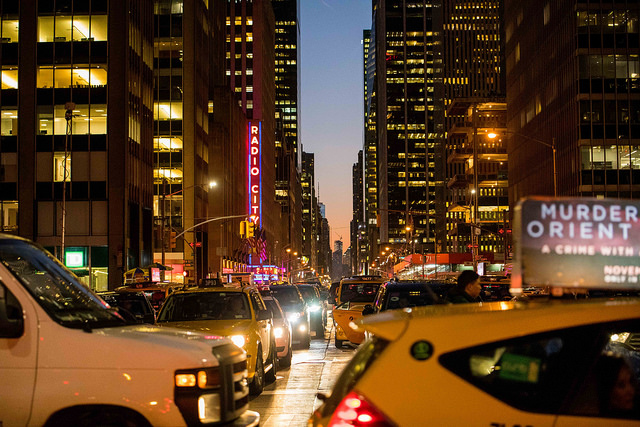
(photo: Benjamin Kanter/Mayoral Photo Office)
New York City’s Department of Finance announced last week that it is moving to reduce the discounts it gives to commercial vehicles through a 15-year-old program that gives companies like Verizon and Fresh Direct a bulk break on parking tickets.
City officials say that the program’s new, higher fees will help reduce congestion by raising the pain for trucks that are double-parked or otherwise blocking traffic, as well as raise revenues by a relatively small amount: $17 million annually. They have sweetened the pill by creating a $120,000-a-year parking czar who supposedly will act as the ticket-payers’ advocate.
But the measure is too little, too late. The problem with the Finance Department’s parking programs -- one is for companies that make short deliveries and another for those with trucks that might stay longer -- is not lack of enforcement; it’s their very existence. New Yorkers should tell their representatives to end, not mend, these inherently unfair, road-clogging, fume-producing programs. A bill pending now in the state Legislature, sponsored in the Assembly by David Weprin (D-Queens), would do that.
Why are the city’s bulk-discount programs for parking tickets so unfair? Aren’t they good for businesses that make deliveries?
Much has changed since Mayor Bloomberg created the programs back in 2003 -- our shopping habits, for one. In the days before massive online shopping, a delivery might be a quick curbside hit by a van. Now, big trucks will park in no-parking zones for hours, as workers unload hand-truck after hand-truck. Traffic crawls around them. Congestion leads to more congestion -- and air pollution, as all kinds of vehicles sit idling.
The parking scofflaws also adversely affect safety for motorists, cyclists, and pedestrians, especially disabled people who must negotiate round the trucks and who depend on unfettered access to parking.
The programs also hurt the little guy. The average citizen does not get to enroll in the programs; we have to fight infractions in hearings or hire agents (like my firm) to do it for us. And higher fees for tickets also will hurt the smaller firms in the program, forcing them to spend more time in court.
The biggest losers may be the taxpayers. The city estimates that it settled almost half of the 3 million tickets incurred by businesses in the programs -- revenues that could have added up to $100 million to city coffers annually. When the city zeroes out tickets through the programs, it also expunges a $15 surcharge on all tickets mandated by the state, which funds anti-drunk driving education, help for indigent defendants, and domestic-violence programs. That deprives the government of another $45 million or so annually.
For all these reasons, these outdated programs amount to corporate welfare we can ill-afford, and they breed cynicism about our traffic laws. Why do some get their fines reduced as part of the cost of doing business, while everyday people pay full freight, so to speak?
Tell your representatives that the meter has run out on these programs.
***
Glen Bolofsky is the CEO of parkingticket.com, a nationwide, web-based service that disputes parking fines.
***
Have an op-ed idea or submission for Gotham Gazette? Email This email address is being protected from spambots. You need JavaScript enabled to view it.
The Contradictions of Cross-Endorsements in the Governor’s Race
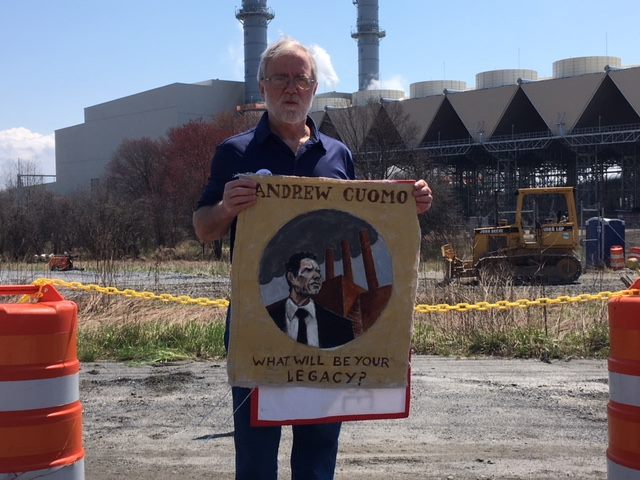
(photo via Facebook: @HowieHawkinsForGovernorPolitician)
That didn’t take long. On Saturday, April 13 the Working Families Party endorsed Democrat Cynthia Nixon for New York Governor. By the following Tuesday, the WFP said they didn’t really mean it.
“We will not be a spoiler,” said Bill Lipton, the WFP’s political director, indicating that the WFP will take Nixon off its ballot line if she loses the Democratic primary against Governor Andrew Cuomo. Perhaps the WFP will offer Cuomo their ballot line for a third time if he wins the Democratic primary – if he will take it.
I feel for rank-and-file WFP progressives. It’s an abusive relationship. They got double-crossed by Cuomo in 2014 when they endorsed him. This year they got strong-armed by Cuomo when they didn’t.
I would like to reassure WFP progressives that, whatever happens in the Democratic primary, the Green Party gubernatorial ticket will offer a progressive alternative in the November 6 general election.
Only three parties – Democratic, Republican, and Green – created their ballot lines by running their own candidates. The other five ballot-qualified parties got the 50,000 votes for governor needed for a ballot line by cross-endorsing the Democrat or Republican. These so-called “fusion” parties function like political clubs inside the major parties, not independent parties.
When the WFP endorsed Cuomo over Zephyr Teachout in 2014, Cuomo’s double-cross began immediately. He backed away the next day from promises he made to get the endorsement in his so-called hostage video to the WFP convention. At the Celebrate Israel Parade the morning after, Cuomo told reporters, “It’s very simple at these political conventions: you either win or you lose. Uh, and I won…At the end of the day I won the endorsement, and that’s what’s really relevant.”
On that morning after, Cuomo broke his promise of the night before to allow municipalities to raise the minimum wage. Asked about his promise to help Democrats take control of the State Senate, Cuomo said, “This is about electing people who support an agenda. I also will oppose Democrats who have opposed things that we have tried to pass."
Over the next nearly four years, Cuomo spent none of his political capital to pressure the Independent Democratic Conference to break its governing coalition with Senate Republicans. Cuomo used the Senate to deflect blame for his failure to enact so much of what he had promised the WFP, including full funding of public schools, the Dream Act, abortion-rights protections, government ethics reform, and public campaign financing. Cuomo played the WFP and took their votes for granted.
So this year the WFP was right to endorse a progressive challenger. Cuomo’s response, according to WFP leaders, was a power play to pull the unions out of the WFP and threaten to cut union and state funding for WFP-affiliated community organizations.
Then there are the scores of WFP-endorsed “Working Families Democrats,” as this nominal third party refers to them, who are running for the State Senate and Assembly. No doubt these Democrats feel pressure from the Democratic machine, and particularly the big Democratic donors who back Cuomo, to endorse Cuomo...or else.
Such are the contradictions of fusion balloting. It would be confusing for the WFP to run Nixon against Cuomo in November when it is also supporting Democrats whose ticket would be headed by Cuomo. Organizing working people to vote for the corporate-sponsored Democrats is like organizing workers into a company union run by the bosses.
The Green Party takes a different approach. We organize working people and progressives into a party that is independent of the Democrats’ corporate donor swamp of real estate barons, Wall Street bankers, media and movie moguls, military contractors, and big pharma and insurance. Our political independence forces Democrats to compete for progressive voters instead of taking them for granted. The Green vote gives us political leverage. We try to win, but we don’t have to win the office to make a difference.
The 184,419 votes for 5% in the general election that the Green gubernatorial ticket received in 2014 reinforced the 192,210 votes that Zephyr Teachout got in the Democratic primary. Cuomo, who had wanted to run up his vote for a presidential run, received a smaller percentage than he had in 2010. Seeking those votes to his left after that election, Cuomo adopted a number of Green demands, from the fracking ban and paid family leave to partial implementation of the $15 minimum wage and tuition-free public college.
Greens will demand more this year, including single-payer health care, fully-funded public schools, a stop to fracked-gas infrastructure, 100% clean energy by 2030, and public campaign finance. And we will still be on the ballot in November.
***
Howie Hawkins, a recently retired Teamster from Syracuse, was the Green Party candidate for Governor of New York in 2010 and 2014 and is seeking its nomination again this year. On Twitter @HowieHawkins.
***
Have an op-ed idea or submission for Gotham Gazette? Email This email address is being protected from spambots. You need JavaScript enabled to view it.
New York City Tourism Industry Deserves Credit for Major Job Growth

(photo: Benjamin Kanter/Mayoral Photo Office)
Over the past two decades, tourism to New York City has swelled from 33 million to nearly 63 million annual visitors, with powerful ripples throughout the city’s economy. Once just one sector among many, tourism has risen to become one of the top four employment drivers in the city, according to a new report published by the Center for an Urban Future, the Association for a Better New York, and the Times Square Alliance
This spike in tourists has sparked hundreds of thousands of new jobs in hotels, restaurants, retail shops, museums, airports, tour bus companies, and even travel-tech startups. More than 291,000 New Yorkers count on tourism for their jobs—putting it on par with the tech ecosystem, the creative economy, and the finance industry. Better yet, the tourism industry provides real, middle-class jobs with an average annual income of $62,000, outpacing comparable sectors like manufacturing.
Given this new data, the city should make concrete efforts that recognize tourism’s role in the region’s economy. Investments in infrastructure, marketing and promotion, and other commonsense initiatives that make this region more convenient to visit will fuel growth across many job sectors.
The city will need to upgrade its tourism infrastructure. New York has never adequately planned for 60 million tourists a year, and it has not made enough of the infrastructure investments that are needed to sustain this many annual visitors. The city needs to create new solutions for tour bus parking and elected officials should push to modernize the air traffic control system. The city should also create its first long-term tourism plan, with involvement from economic development, planning, and transportation agencies.
Despite the stunning influx of tourists, New York’s tourism sector faces several new and evolving challenges, from the strong dollar to a tourism promotion budget that has not stayed competitive with that of marketing agencies in other global destinations. New York boasts one of the best tourism promotion agencies in the world, NYC & Company, but the city should increase its budget to support its important mission and bolster the tourism industry citywide.
With tourists accounting for roughly 70 percent of passengers at JFK Airport and 50 percent at LaGuardia, the Port Authority should continue its work to improve the airport experience. The agency has made important investments in recent years, but should consider new initiatives like free WiFi in all airports, and more multilingual staff and wayfinding signage in terminals to support and encourage tourism.
New investments in infrastructure and a more welcoming environment for tourists would have resounding effects across the economy. Tourists are responsible for 24 percent of all Visa credit card transactions at the city’s restaurants and bars, and make nearly one-fifth of all purchases at the city’s retail stores, a crucial boost as many retailers face increasing pressure from online competition.
Out-of-towners are also fueling the growth in attendance at cultural institutions—and the job gains that have come with it. Tourists now comprise 73 percent of visitors to the Museum of Modern Art, 70 percent of visitors to the Whitney Museum of American Art, and 60 percent of the Metropolitan Museum’s visitors. The city’s museums and historical sites have added 4,500 jobs in the past 15 years—an 86 percent increase.
With a billion people poised to join the ascendant global middle class, opportunity lies ahead for New York City’s tourism economy—along with thousands of new jobs. But channeling sustainable growth in the future will require increased planning and a new way of thinking about the 60-plus million annual tourists that the city has today.
***
Jonathan Bowles is executive director of the Center for an Urban Future. Angela Pinsky is executive director of the Association for a Better New York. Tim Tompkins is president of the Times Square Alliance.
***
Have an op-ed idea or submission for Gotham Gazette? Email This email address is being protected from spambots. You need JavaScript enabled to view it.